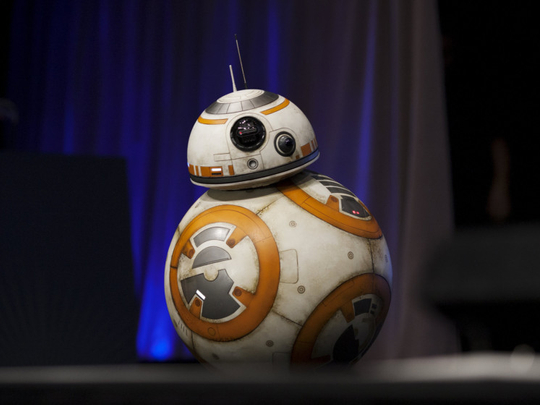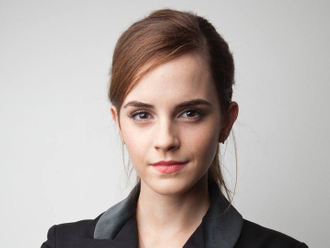
The daffodils have barely opened and toy retailers are already getting excited about Christmas. Very excited, in fact.
An American manufacturer this week unveiled the toy that many in the industry believe will be the knock-’em-dead hit with children across the world this year. It’s a cute-looking orange, white and grey robot with a giant football of a body and a small bowl-shaped head on top.
Crucially, this is not just any old robot. It’s a new Star Wars robot. Almost 40 years after R2D2 and C3PO first made their entrance, it’s time to meet BB-8, the mechanised star of the latest movie in the franchise, Star Wars: The Force Awakens. The new ball droid has already appeared in the first teaser trailer. It is not created with CGI, as fans had originally thought, but is a fully operational prop.
Unlike R2D2, there’s no actor tucked inside; instead, its innards — a mix of gyroscopic technology, accelerometer and battery pack — are brought to life by a puppeteer, who manoeuvres it about on screen before being “erased” digitally in the final edit.
According to internet rumours, the toy version of the spinning droid with the cute bobbing head is believed to be assembled using magnets, and its speed and direction controlled by your smartphone. When it goes on sale, it is expected to cost somewhere around the $150 (Dh550) mark.
Conveniently, the movie is due to open a week before Christmas. Parents, start saving now. Because even though Star Wars movies are big — this will be the eighth in the series — Star Wars merchandising is bigger. It is estimated that the value of its merchandise sold around the world since the release of the first movie in 1977 is in excess of £3 billion (Dh16.7 billion). When Star Wars creator George Lucas sold his company Lucasfilm in 2012, Disney paid more than £2.5 billion for it.
Such amazing numbers demonstrate where Lucas’s extraordinary genius really lies: not in making the movies (Harrison Ford complained of the first Star Wars script that “You can type this [expletive], George, but you sure can’t say it”), but how to merchandise them.
In the late Seventies, before anyone else in Hollywood, Lucas realised the value of R2D2 action figures, Luke Skywalker mugs and Darth Vader cruet sets (yes, really). Until that point, movie merchandise been seen by the studios as a jolly add-on, free advertising for a successful film. Lucas sensed that it could be very much more important than that. At a time when his market rate to direct a film commanded a fee in the region of $500,000, he took a mere $100,000 to write and direct the first Star Wars movie, with one proviso: he should be allowed the merchandising rights to himself. It was a billion-dollar decision.
“Nobody will admit to being the person at Fox who let this deal happen,” says Tom Pollock, the lawyer who negotiated the deal for Lucas. “From a studio standpoint, it was one of the major mistakes of all time.”
But why is the Star Wars saga — famously described as “cowboys and Indians in space” — so enduring? Why do so many kids (and former kids) keep returning to the cinema to see it, and to the toy shop to bring it home with them?
Matt Hills, professor of film and TV studies at Aberystwyth University, says: “You can see Star Wars as a type of contemporary mythology. It has a timeless clarity and structure.” Hills is in his early forties and still has all the toys — “Obi-Wan Kenobi, Luke Skywalker, Darth Vader, the lot” — that his parents bought him after the first movie was released.
Hills says: “A lot of the affection and nostalgia that audiences feel isn’t just for the films, it’s for the action figures that they had when they were young.” It’s a mutually reinforcing arrangement: a pile of Star Wars toys at home encourages families to see the new Star Wars movie, and the movie encourages them to go home and buy more Star Wars toys. More than that, the books, toys and trinkets keep the franchise alive in between movies.
The weird thing is that you don’t even have to like the films to want the toys. My eight-year-old son George has never seen any of the movies, but he has boxes of Star Wars Lego, there’s a Lightsaber in the corner of the play room and he’s downloaded Star Wars apps on to my phone.
And will he be getting a BB-8? Let’s just wait and see what Father Christmas decides.













